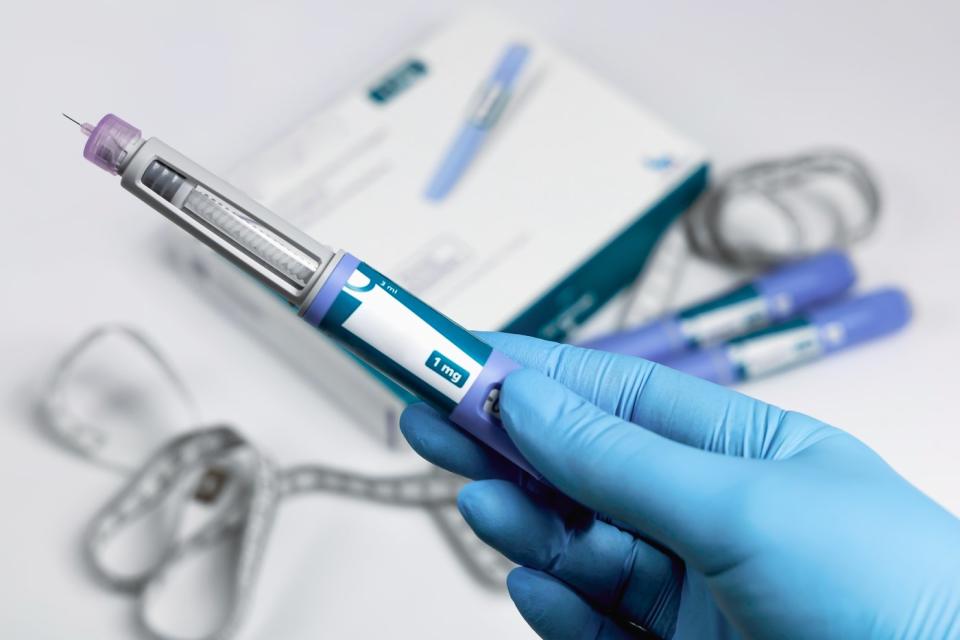Prediction: This Will Be the Best Pharmaceutical Stock to Own Over the Next 10 Years

So far in 2024, the healthcare sector has returned 8.5%. This is roughly on par with the long-term average return of the S&P 500. While that’s not too shabby, growth investors may be looking for something a little more enticing.
Within the broader healthcare sector, the drug manufacturers market has generated a return of 14.3% so far in 2024 and 17.3% over the last year. One of the biggest players among drug manufacturers is Eli Lilly (NYSE: LLY). With shares up 82% over the last 12 months, Lilly looks absolutely unstoppable.
Despite this meteoric rise, I think Lilly’s gains are just getting started. Let’s break down what’s fueling Lilly’s growth right now, and explore why the company’s future prospects look bright.
Weight loss treatments are on the rise
Eli Lilly is a diversified pharmaceutical company treating areas such as plaque psoriasis, psoriatic arthritis, insulin, and cancer. But right now, the company is generating the majority of its growth from glucagon-like peptide 1 (GLP-1) agonists Mounjaro and Zepbound.
Research from J.P. Morgan suggests that the total addressable market for GLP-1 agonists could reach $100 billion just in the U.S. by 2030. This presents Lilly with a massive opportunity, and Mounjaro and Zepbound’s current trajectory suggest that Lilly is primed to thrive in the emerging weight loss boom.
For the quarter ended March 31, Mounjaro was Lilly’s largest source of revenue, generating $1.8 billion. Moreover, Zepbound reported approximately $500 million in sales — putting it on a run rate of $2 billion in its first full year on the market.
What’s even more encouraging is that Lilly is not resting on its laurels despite these impressive results. The company acquired a manufacturing facility from Nexus Pharmaceuticals earlier this year, marking a clear dedication to ensuring adequate supply and demand protocols to deliver top patient care.
Lastly, while GLP-1 medications are generally prescribed to patients in need of diabetes and obesity care right now, Lilly has been hard at work looking to identify additional applications. Receiving an expanded indication from the Food and Drug Administration (FDA) for Mounjaro or Zepbound could open up lots of opportunities and new markets.

Lilly’s newest opportunity is worth billions
Although weight loss medications are Lilly’s biggest sources of growth right now, the company just received some incredible news that unlocks the door to yet another enormous market. Lilly’s Alzheimer’s drug, donanemab, received FDA approval in early July. This is a big deal for a couple of reasons.
First, a report by Market.us suggests that the global Alzheimer’s disease therapeutics market will expand at a 19% compound annual growth rate between 2024 and 2033, ultimately reaching a size of $31 billion.
The second reason donanemab represents such potential for Lilly is that the Alzheimer’s treatment market is quite fragmented. Right now, the main players in treating Alzheimer’s are Biogen and Eisai. With little in the way of mainstream competition, Lilly has a unique opportunity to make a splash in an underserved market worth tens of billions over the next decade.
The next frontier for the pharmaceutical industry
The last point supporting my long-term thesis for Lilly revolves around artificial intelligence (AI). When you think about AI, I’d wager that things like quantum computing or machine learning come to mind.
However, what investors may not fully understand is that these generative AI applications extend to many end markets outside of the technology landscape.
In particular, AI is increasingly becoming integrated throughout the healthcare space. AI has the ability to help pharmaceutical businesses process data at a larger scale and more efficiently in clinical trials. Moreover, I think AI will play an important role in areas such as drug discovery and identifying disease and illnesses well in advance of them becoming fatal.
Although it will likely take years for AI to really start impacting the healthcare space, Lilly’s partnership with OpenAI is an encouraging sign that the company remains a steadfast innovator and best-in-class medical provider.
The bottom line
I think it’s safe to say that much of the gains in Lilly stock over the last year can be attributed to the following: ongoing growth from the GLP-1 business, investor expectations that donanemab would be approved, and a strong market in general.
But considering the GLP-1 and Alzheimer’s treatment markets are expected to expand significantly in the coming years, coupled with the potential for Mounjaro and Zepbound to become more prolific medications by receiving expanded indications, I think that there’s a good case to be made that none of these opportunities are fully baked into Lilly’s current valuation.
Furthermore, as AI continues to become increasingly integrated into more markets, I think Lilly has a lot of potential to be a key developer of more successful medications and evolve into an even bigger business.
For all of these reasons, I am bullish on Lilly’s prospects — especially over the next 10 years as GLP-1 and Alzheimer’s treatments play a major role in Lilly’s growth. I think now is a great opportunity to buy shares of Lilly stock and prepare to hold for the long run.
Should you invest $1,000 in Eli Lilly right now?
Before you buy stock in Eli Lilly, consider this:
The Motley Fool Stock Advisor analyst team just identified what they believe are the 10 best stocks for investors to buy now… and Eli Lilly wasn’t one of them. The 10 stocks that made the cut could produce monster returns in the coming years.
Consider when Nvidia made this list on April 15, 2005… if you invested $1,000 at the time of our recommendation, you’d have $615,516!*
Stock Advisor provides investors with an easy-to-follow blueprint for success, including guidance on building a portfolio, regular updates from analysts, and two new stock picks each month. The Stock Advisor service has more than quadrupled the return of S&P 500 since 2002*.
*Stock Advisor returns as of August 6, 2024
JPMorgan Chase is an advertising partner of The Ascent, a Motley Fool company. Adam Spatacco has positions in Eli Lilly and Novo Nordisk. The Motley Fool has positions in and recommends JPMorgan Chase. The Motley Fool recommends Biogen and Novo Nordisk. The Motley Fool has a disclosure policy.
Prediction: This Will Be the Best Pharmaceutical Stock to Own Over the Next 10 Years was originally published by The Motley Fool








